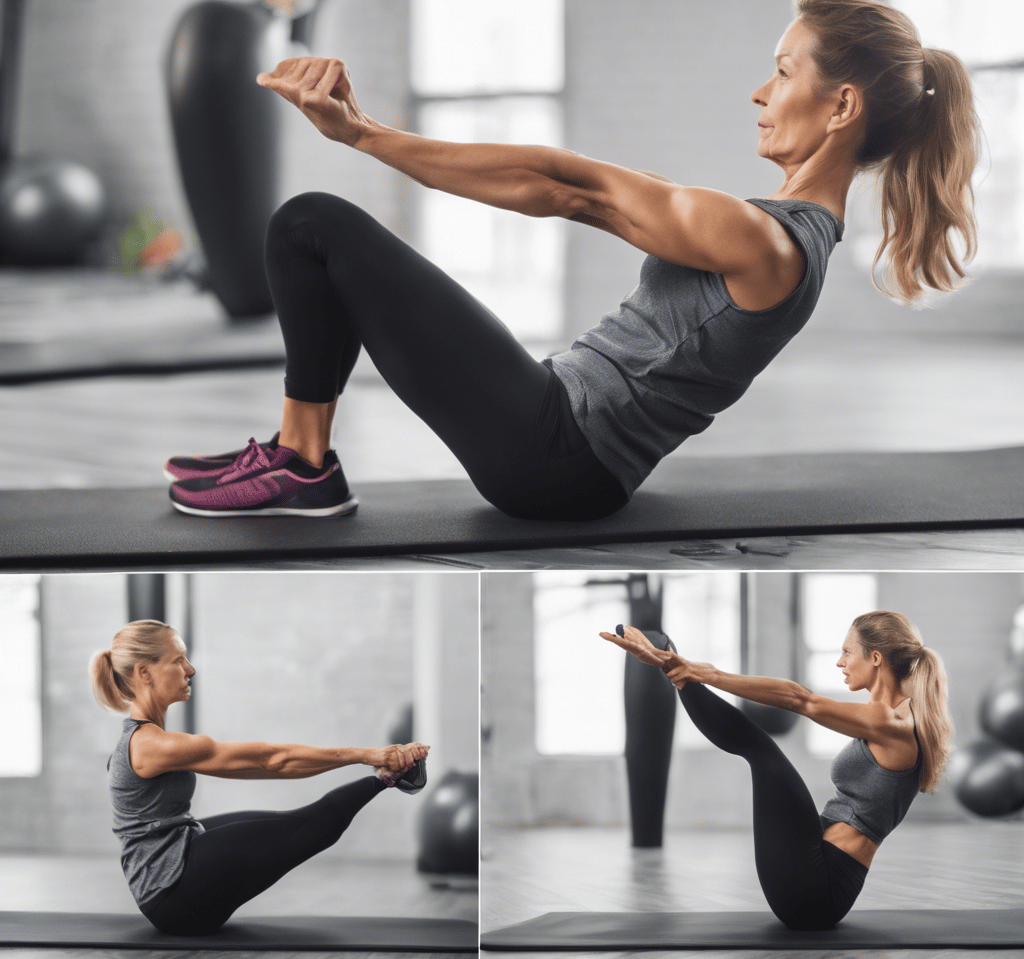Top 5 Low-Impact Exercises to Boost Strength and Flexibility After 40
Let’s explore five great options that can help boost strength and flexibility without putting strain on your joints.
10/13/20243 min read


### Top 5 Low-Impact Exercises to Boost Strength and Flexibility After 40
Maintaining strength, flexibility, and overall health becomes even more important as we age, but our bodies may not tolerate the intense, high-impact workouts we could handle in our 20s and 30s. This is especially true for those over 40, when joint health, muscle preservation, and injury prevention become top priorities. Luckily, there are plenty of low-impact exercises that offer a safe and effective way to stay fit. Let’s explore five great options that can help boost strength and flexibility without putting strain on your joints.
---
### 1. Yoga
Yoga is perfect for enhancing flexibility, building core strength, and reducing stress. This ancient practice involves a series of stretches and poses that improve balance, joint mobility, and muscle tone. It’s particularly beneficial for people over 40 because it gently targets the entire body while focusing on breath control, which promotes relaxation and mental clarity.
Why it’s great:
- Increases flexibility and balance
- Builds strength, especially in the core
- Helps relieve stress and anxiety
- Improves joint health through gentle movement
How to get started:
Begin with beginner-friendly yoga routines, such as Hatha or Yin yoga, which emphasize slow movements and longer stretches. Online classes, apps, or local studios often offer tailored sessions for various skill levels.
---
### 2. Swimming
Swimming is an ideal full-body workout that’s easy on the joints but tough on muscles. Water provides natural resistance, allowing you to strengthen muscles without the risk of injury or strain common with land-based exercises. Whether you’re swimming laps or trying water aerobics, this low-impact workout enhances cardiovascular fitness while building muscle endurance and flexibility.
Why it’s great:
- Full-body workout without joint strain
- Builds cardiovascular endurance and muscle tone
- Perfect for those with arthritis or joint pain
- Improves flexibility through fluid movements in water
How to get started:
Find a local pool or community center that offers swim classes or open swim times. Try water aerobics classes for a group-based, low-impact workout that’s both fun and effective.
---
### 3. Walking
Walking is one of the simplest yet most effective low-impact exercises available. It’s accessible, requires no special equipment, and can easily be adapted to any fitness level. Walking improves cardiovascular health, strengthens leg muscles, and promotes mental well-being, making it a perfect choice for those over 40.
Why it’s great:
- Improves cardiovascular health
- Strengthens leg and core muscles
- Boosts mood and reduces stress
- Easy to integrate into daily life
How to get started:
Start with a 20-30 minute walk at a comfortable pace, and gradually increase your distance or speed. Incorporate brisk walking to boost intensity, or try walking on nature trails for an added mental health benefit.
---
### 4. Resistance Band Workouts
Resistance bands are an excellent tool for low-impact strength training. These elastic bands offer adjustable resistance, making them perfect for those who want to build muscle without heavy weights. They’re especially helpful for targeting specific muscle groups, improving muscle tone, and increasing flexibility while being gentle on the joints.
Why it’s great:
- Builds strength without heavy equipment
- Improves muscle tone and joint stability
- Great for home workouts or while traveling
- Adjustable resistance levels for different fitness abilities
How to get started:
Try basic resistance band exercises like squats, chest presses, or lateral leg raises. Incorporate these movements into your routine 2-3 times a week to gradually build strength and improve flexibility.
---
### 5. Pilates
Pilates is a low-impact exercise that focuses on strengthening the core, improving posture, and enhancing flexibility. It uses controlled movements to target muscles, especially in the abdomen, back, and pelvic region. Pilates is ideal for people over 40 because it emphasizes body awareness and stability, which helps prevent injuries and promotes functional strength.
Why it’s great:
- Strengthens core muscles and improves posture
- Enhances flexibility and balance
- Low impact on joints but highly effective for toning
- Great for spinal health and injury prevention
How to get started:
Join a Pilates class or follow a beginner's guide online. Start with mat Pilates, which requires minimal equipment, and gradually progress to more advanced moves as you gain strength and confidence.
---
### Final Thoughts
Staying fit and flexible after 40 doesn’t have to involve high-impact or strenuous workouts. These five low-impact exercises—yoga, swimming, walking, resistance band training, and Pilates—offer excellent ways to maintain strength, improve flexibility, and protect your joints. The key is consistency and listening to your body, allowing you to stay active, healthy, and strong for years to come.
